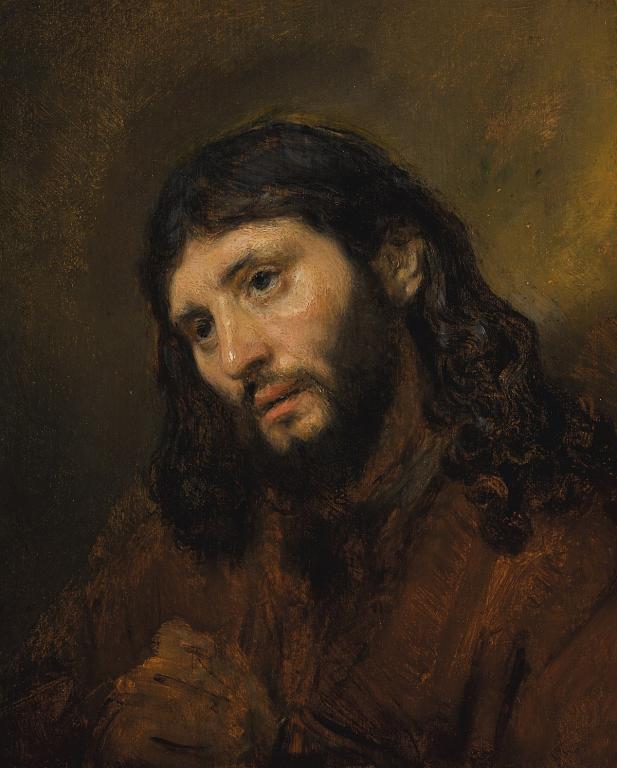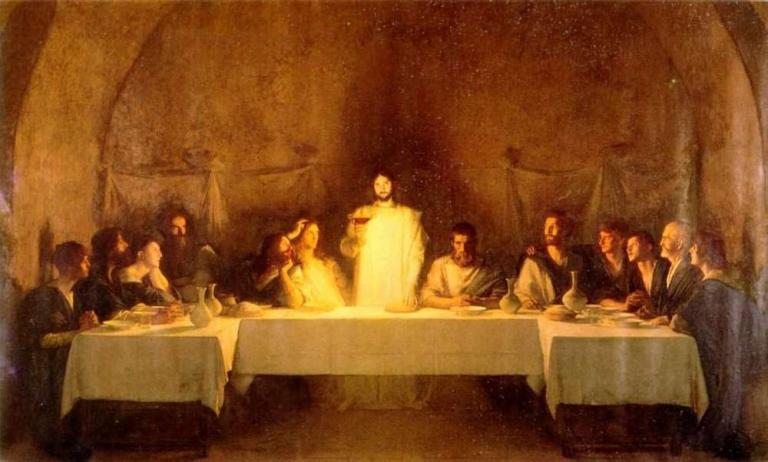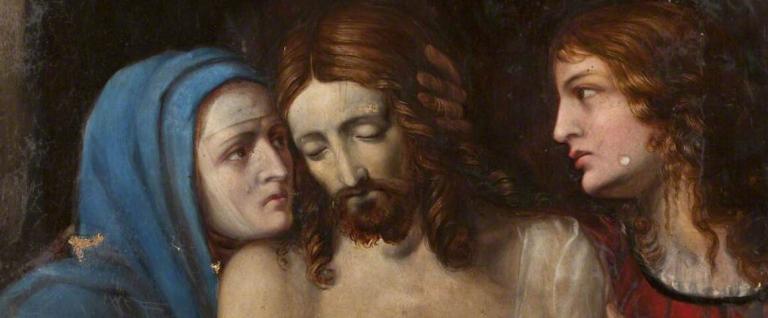 Throughout the Middle Ages and into the modern period, and even today in some areas of the world, Jews have dreaded Holy Week. They remember the many occasions when Christians have poured out of churches after Good Friday services and attacked Jewish people and their homes and synagogues.
Throughout the Middle Ages and into the modern period, and even today in some areas of the world, Jews have dreaded Holy Week. They remember the many occasions when Christians have poured out of churches after Good Friday services and attacked Jewish people and their homes and synagogues.
Why have Christians done these horrible things? Of course, there has always been residual anti-semitism. But Good Friday readings became triggers that convinced Christians on that holy day that Jews were—and are!—Christ-killers. Typically those readings have been from the gospel of John and included such lines as
[Pilate] said to the Jews, “Behold your king!” They cried out, “Away with him, away with him, crucify him! (John 19.14b-15a)For more than a millennium Christians have heard lines like these on Good Friday and concluded that Scripture was telling them that all the Jews in Jesus’ day called for his crucifixion.
Especially when they remembered other lines from John, they concluded that even Jews today are condemned by the Bible. Lines such as these from John:
Jesus said to [the Jews] . . . . You are of your father the devil, and your will is to do your father’s desires. (John 8.42a, 44)
It turns out that all of these false conclusions were based on bad translations. In almost every case the word Ioudaioi should have been translated “Judean leaders controlling the temple establishment.” These were Sadducees who hated Jesus because they were jealous of his popularity.
Confusion has ruled the translation of Ioudaioi because the word can also mean “Jews,” and literary context determines the proper meaning. More and more scholars are realizing that the literary context of John’s gospel shows that in most cases John (a Jew!) meant Ioudaioi to refer to those Sadducean leaders in Jerusalem, not Jews in the rest of Jerusalem and certainly not all Jews.
John’s gospel actually traces two groups of Ioudaioi, those in Judea who hated him and those in Judea who loved him. Consider John 10.19 and 11.45: “There was again a division among the Ioudaioi because of these words. Many of them said, ‘He has a demon, and is mad; why do you listen to him?’ Others said, ‘These are not the words of a demon-possessed person. Would such a person be able to open the eyes of the blind?’” . . . . Many of the Ioudaioi therefore, who had come with Mary and saw what Jesus did, believed in him.”
There is more reason to think that John was not anti-Israel or anti-Jewish. He uses the word “Israel” positively in chapter 1 when he says John the Baptist revealed the messiah to Israel, and that Nathanael was an Israelite in whom there was no deceit (Jn 1:31, 47). And in 4:22 he shows enormous respect for the Jewish people and their religion: “Salvation is from the Jews.” At other points in his gospel, his use of Ioudaioi is neutral: he says “many of the Ioudaioi went to Martha and Mary to mourn with them concerning their brother” Lazarus (11:19), and that Jesus told the high priest that he taught openly at the Temple, “where many Ioudaioi gather” (18:20). Therefore Jesus’ condemnation of some Ioudaioi (for example, “You are of your father the devil” [Jn 8:44]) was just that—a selective attack on certain leaders in Jerusalem, the ones who increasingly opposed him and finally put him to death.
So the correct translation of the two passages above are as follows.
[Pilate] said to the Judean leaders, “Behold your king!” They cried out, “Away with him, away with him, crucify him! (John 19.14b-15a)Jesus said to [the Judean leaders] . . . . You are of your father the devil, and your will is to do your father’s desires. (John 8.42a, 44)
Most ACNA churches use the ESV translation, which unfortunately perpetuates this bad translation history. Since the ACNA lectionary reading for Good Friday is John 18 & 19.1-37, I will reproduce the ESV readings below but with requisite changes. I have also added the last paragraph of John 19 because it is a Holy Saturday reading. If you are a rector, may I ask you to give these translations below to your readers? [Please note where words are split on the right margin.]
18 When Jesus had spoken these words, nhe went out with his disciples across othe brook Kidron, where there was a garden, which he and his disciples entered. 2 Now Judas, who betrayed him, also knew pthe place, for qJesus often met there with his disciples. 3 rSo Judas, having procured a band of soldiers and some officers from the chief priests and the Pharisees, went there with lanterns and torches and weapons. 4 Then Jesus, sknowing all that would happen to him, came forward and said to them, t“Whom do you seek?” 5 They answered him, “Jesus of Nazareth.” Jesus said to them, “I am he.”1 Judas, who betrayed him, was standing with them. 6 uWhen Jesus2 said to them, “I am he,” they drew back and fell to the ground. 7 So he asked them again, t“Whom do you seek?” And they said, “Jesus of Nazareth.” 8 Jesus answered, “I told you that I am he. So, if you seek me, let these men go.” 9 vThis was to fulfill the word that he had spoken: “Of those whom you gave me I have lost not one.” 10 Then Simon Peter, whaving a sword, drew it and struck the high priest’s servant3 and cut off his right ear. (The servant’s name was Malchus.) 11 So Jesus said to Peter, “Put your sword into its sheath; xshall I not drink the cup that the Father has given me?”
Jesus Faces Annas and Caiaphas
12 So the band of soldiers and their captain and the officers of the Judean leaders4 arrested Jesus and bound him. 13 First they yled him to zAnnas, for he was the father-in-law of aCaiaphas, who was high priest that year. 14 It was Caiaphas who had advised the Judean leaders bthat it would be expedient that one man should die for the people.
Peter Denies Jesus
15 cSimon Peter followed Jesus, and so did another disciple. Since that disciple was known to the high priest, he entered with Jesus into the courtyard of the high priest, 16 dbut Peter stood outside at the door. So the other disciple, who was known to the high priest, went out and spoke to the servant girl who kept watch at the door, and brought Peter in. 17 eThe servant girl at the door said to Peter, “You also are not one of this man’s disciples, are you?” He said, “I am not.” 18 Now the servants5 and officers had made a charcoal fire, because it was cold, and they were standing and warming themselves. fPeter also was with them, standing and warming himself.
The High Priest Questions Jesus
19 gThe high priest then questioned Jesus about his disciples and his teaching. 20 Jesus answered him, “I have spoken hopenly ito the world. I have always taught in synagogues and in the temple, where all Judeans come together. jI have said nothing in secret. 21 Why do you ask me? Ask those who have heard me what I said to them; they know what I said.” 22 When he had said these things, one of the officers standing by struck Jesus with his hand, saying, k“Is that how you answer the high priest?” 23 Jesus answered him, “If what I said is wrong, bear witness about the wrong; but if what I said is right, why do you strike me?” 24 lAnnas then sent him bound to lCaiaphas the high priest.
Peter Denies Jesus Again
25 mNow Simon Peter was standing and warming himself. So they said to him, “You also are not one of his disciples, are you?” He denied it and said, “I am not.” 26 One of the servants of the high priest, a relative of nthe man whose ear Peter had cut off, asked, “Did I not see you oin the garden with him?” 27 Peter again denied it, and pat once a rooster crowed.
Jesus Before Pilate
28 qThen they led Jesus rfrom the house of Caiaphas to sthe governor’s headquarters.6 It was early morning. They themselves did not enter the governor’s headquarters, tso that they would not be defiled, ubut could eat the Passover. 29 vSo Pilate went outside to them and said, “What accusation do you bring against this man?” 30 They answered him, “If this man were not doing evil, we would not have delivered him over to you.” 31 Pilate said to them, w“Take him yourselves and judge him by your own law.” The Judean leaders said to him, “It is not lawful for us to put anyone to death.” 32 xThis was to fulfill the word that Jesus had spoken yto show by what kind of death he was going to die.
My Kingdom Is Not of This World
33 zSo Pilate entered his headquarters again and called Jesus and said to him, a“Are you the King of the Jewish people?” 34 Jesus answered, “Do you say this of your own accord, or did others say it to you about me?” 35 Pilate answered, “Am I Jewish? Your own nation and the chief priests have delivered you over to me. What have you done?” 36 Jesus answered, b“My kingdom cis not of this world. If my kingdom were of this world, dmy servants would have been fighting, that eI might not be delivered over to Judean leaders. But my kingdom is not from the world.” 37 Then Pilate said to him, “So you are a king?” Jesus answered, f“You say that I am a king. gFor this purpose I was born and for this purpose hI have come into the world—ito bear witness to the truth. jEveryone who is kof the truth llistens to my voice.” 38 Pilate said to him, “What is truth?”
After he had said this, mhe went back outside to the Jews and told them, n“I find no guilt in him. 39 oBut you have a custom that I should release one man for you at the Passover. So do you want me to release to you the King of the Jewish people?” 40 They cried out again, p“Not this man, but Barabbas!” Now Barabbas was a robber.7
Jesus Delivered to Be Crucified
19 Then Pilate took Jesus and qflogged him. 2 rAnd the soldiers twisted together a crown of thorns and put it on his head and arrayed him in a purple robe. 3 They came up to him, saying, “Hail, King of the Jewish people!” and struck him with their hands. 4 Pilate went out again and said to them, “See, I am bringing him out to you that you may know that sI find no guilt in him.” 5 So Jesus came out, wearing tthe crown of thorns and the purple robe. Pilate said to them, u“Behold the man!” 6 When the chief priests and the officers saw him, they cried out, “Crucify him, crucify him!” Pilate said to them, v“Take him yourselves and crucify him, for wI find no guilt in him.” 7 The Jews1 answered him, “We have a law, and xaccording to that law he ought to die because yhe has made himself the Son of God.” 8 When Pilate heard this statement, zhe was even more afraid. 9 aHe entered his headquarters again and said to Jesus, b“Where are you from?” But cJesus gave him no answer. 10 So Pilate said to him, “You will not speak to me? Do you not know that I have authority to release you and authority to crucify you?” 11 Jesus answered him, d“You would have no authority over me at all unless it had been given you from above. Therefore ehe who delivered me over to you fhas the greater sin.”
12 From then on gPilate sought to release him, but the Judean leaders cried out, “If you release this man, you are not Caesar’s friend. hEveryone who makes himself a king opposes Caesar.” 13 So when Pilate heard these words, he brought Jesus out and sat down on ithe judgment seat at a place called The Stone Pavement, and in Aramaic2 Gabbatha. 14 Now it was jthe day of Preparation of the Passover. It was about the sixth hour.3 He said to the
Judeans gathered there, k“Behold your King!” 15 They cried out, l“Away with him, away with him, crucify him!” Pilate said to them, “Shall I crucify your King?” The chief priests answered, “We have no king but Caesar.” 16 mSo he ndelivered him over to them to be crucified.
The Crucifixion
So they took Jesus, 17 and ohe went out, pbearing his own cross, to the place called The Place of a Skull, which in Aramaic is called Golgotha. 18 qThere they crucified him, and with him two others, one on either side, and Jesus between them. 19 Pilate ralso wrote an inscription and put it on the cross. It read, “Jesus of Nazareth, the King of the Jewish people.” 20 Many of the Jews read this inscription, for sthe place where Jesus was crucified was near the city, and it was written in Aramaic, in Latin, and in Greek. 21 So the chief priests of the Jewish people said to Pilate, “Do not write, ‘The King of the Jews,’ but rather, ‘This man said, I am King of the Jews.’” 22 Pilate answered, t“What I have written I have written.”
23 uWhen the soldiers had crucified Jesus, they took his garments and divided them into four parts, one part for each soldier; also his tunic.4 But the tunic was seamless, woven in one piece from top to bottom, 24 so they said to one another, “Let us not tear it, but cast lots for it to see whose it shall be.” vThis was to fulfill the Scripture which says,
w“They divided my garments among them,
and for my clothing they cast lots.”
So the soldiers did these things, 25 xbut standing by the cross of Jesus were his mother and his mother’s sister, Mary the wife of Clopas, and Mary Magdalene. 26 When Jesus saw his mother and ythe disciple whom he loved standing nearby, he said to his mother, z“Woman, behold, your son!” 27 Then he said to the disciple, “Behold, your mother!” And from that hour the disciple took her to ahis own home.
The Death of Jesus
28 After this, Jesus, knowing that all was now bfinished, said (vto fulfill the Scripture), c“I thirst.” 29 A jar full of sour wine stood there, dso they put a sponge full of the sour wine on a hyssop
branch and held it to his mouth. 30 When Jesus had received the sour wine, he said, e“It is finished,” and he bowed his head and fgave up his spirit.
Jesus’ Side Is Pierced
31 Since it was gthe day of Preparation, and hso that the bodies would not remain on the cross on the Sabbath (for that Sabbath was ia high day), the Jewish people asked Pilate that their legs might be broken and that they might be taken away. 32 So the soldiers came and broke the legs of the first, and of the other jwho had been crucified with him. 33 But when they came to Jesus and saw that he was already dead, they did not break his legs. 34 But one of the soldiers pierced his side with a spear, and at once there came out kblood and water. 35 lHe who saw it has borne witness—mhis testimony is true, and he knows that he is telling the truth—nthat you also may believe. 36 oFor these things took place that the Scripture might be fulfilled: p“Not one of his bones qwill be broken.” 37 And again another Scripture says, r“They will look on him whom they have pierced.”
Jesus Is Buried
38 sAfter these things Joseph of Arimathea, who was a disciple of Jesus, but secretly tfor fear of the Judean leaders, asked Pilate that he might take away the body of Jesus, and Pilate gave him permission. So he came and took away his body. 39 uNicodemus also, who earlier had come to Jesus5 by night, came vbringing a mixture of wmyrrh and aloes, about seventy-five pounds6 in weight. 40 So they took the body of Jesus and xbound it in ylinen cloths with the spices, as is the burial custom of the Jewish people. 41 Now in the place where he was crucified there was a zgarden, and ain the garden a new tomb bin which no one had yet been laid. 42 So because of the Jewish cday of Preparation, dsince the tomb was close at hand, they laid Jesus there.










